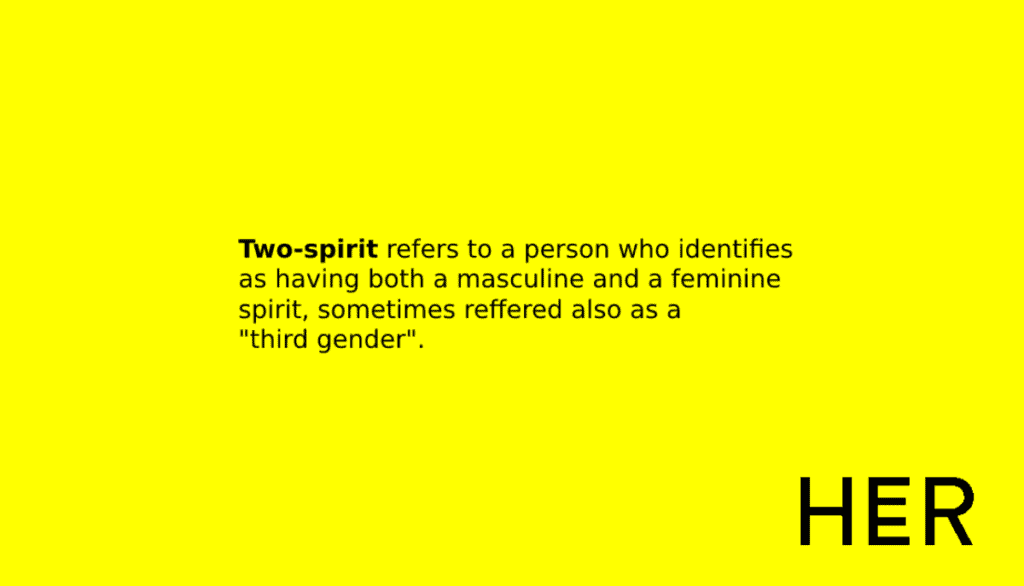Two-spirit is a term used in indigenous Native American and First Nations cultures – often classed as a ‘third gender.’ It is also used by some Aboriginal and other indigenous cultures.
In basic terms, it means someone has both male and female spirits, and they identify as both.
Two-spirit is generally considered a form of non-binary identity because it doesn’t fit within the traditional male/female binary view of gender.
Some compare two-spirit to bigender, which is used in a similar way in non-indigenous cultures.
Like bigender, it encompasses two or multiple genders, and people identify with both masculinity and femininity.
Two-spirit is actually an umbrella term that refers to a range of different gender identities that all share an existence outside the traditional gender boundary.
Various indigenous communities and cultures have their own specific genders outside of male and female, and two-spirit is a term that includes all these different terms and is used most often by non-indigenous people to refer to this range of genders.
For many indigenous people and cultures, two-spirit is more accurate and culturally sensitive than non-binary, which non-indigenous people primarily use.
Download HER
Where Does the Term Come From?
The term two-spirit was created to refer to Ojibwe, an indigenous North American language.
At an LGBTQ+ conference in Canada in 1990, the term was discussed as a culturally respectful way to refer to ‘third genders’ in Native American and First Nations cultures. The conference was in Winnipeg, which was originally Ojibwe land, hence why their language was chosen to be translated to coin the term.
The term has been criticized for referring to two genders because it perpetuates the gender binary, while the terms in different Native American languages generally don’t reinforce that binary.
However, it is still generally accepted to be the best term to refer to these genders.
There are over 500 surviving Native American cultures, and various indigenous cultures around the world also use the term. Across these cultures, there are hundreds of different languages with different ways of describing and performing gender.
Cree is one First Nations culture with many words that refer to individuals who act, dress, or live as a different gender to the one they were assigned at birth.
Nádleeh or nádleehi refer to people who identify differently to the gender they were assigned at birth in Navajo culture. Literally, the word means to be changed or transformed.
In Ojibwe culture, they have the terms ikwekaazo and ininiikaazo which loosely translate to trans woman and trans man respectively.
How Should I Refer to a Person With a Two-Spirit Gender Identity?
Because two-spirit is an umbrella term that encompasses a range of different identities and cultures, the individuals within this umbrella use a range of different terms and pronouns to refer to themselves.
As with any gender identity, it’s important to check in with the individual, ask how they would like to be referred to, and respect that.
Some indigenous trans and non-binary people choose not to use this term for themselves, and that’s valid too. Not all cultures or tribes accept this term, acknowledge genders outside of the binary, or use gendered language at all.
Primarily, it’s vital not to assume anyone’s identity, cultural norms, or pronouns without asking first.







